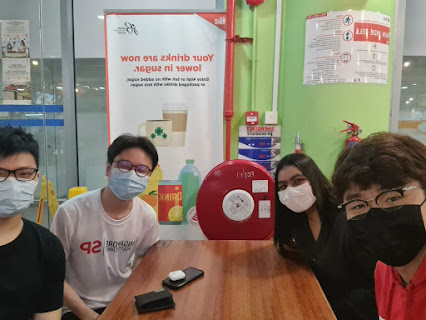WEEK 12
After the short-lived term break 😭, we resumed back our ICPD lessons! So in Week 7, we learnt about CAD - Computer Aided Design 💻 which we understood as softwares which allowed us to design 📐and draw out 🖌 our products on the computer from which we understood the various benefits 💡 of why it exists and we also used FUSION 360 to put it into practice. For this week, we continued with learning about Product Development 🔨🔧 which we started in week 7 before the break but this time we focused on Digital Fabrication - 3D Printing 📦.
----------------------------------------------------------------------------------------------------------------------------
📌Background
Traditional manufacturing roles: the designer designs the part, manufacturing engineer examines the blueprint and might disagree with the designer when a particular component cant be manufactured as per the designer's designs because maybe the designer isn't as well-versed with the constraints of the manufacturing machines which leads to a negotiation between the two with the re-designing process resulting in a lot of time🕑 and
💸 wasted.Is there a more efficient way?
💡Digital Fabrication.
There will not be an instant solution to the problem but using design software will guide one to explore how to make that happen. With a generative design software, one can input the problem and specify the conditions to make it customisable e.g. this is the kind of space I can work in, this is the loads, this is the kind of force going in the part and these are materials we are willing to explore. The software will generate tens to hundreds of options for to explore from which one can weigh the criteria. E.g. if one finds weight more important than stiffness, or strength is more important than surface properties, one can compare them in a graph and find a design which will better suit the requirements.
In the subtractive world - the route to high efficiency, speed to market and low cost is to simulate as much as possible and only cut metal at the end of the process. However, for the additive world, one can iterate something many times to get the design right. One can iterate it physically but it still needs to be designed, manufactured, cooled, machined, tested which takes a long time. Therefore, instead of doing a linear process it can be done simultaneously, to save a lot of time - by using a Manufacturing software i.e. 3D Printing.
📌What is Digital Fabrication?
Digital fabrication is a design and production process where digital data directly drives manufacturing equipment to create various parts of the product. This data most often comes from CAD (computer-aided design), which is then transferred to CAM (computer-aided manufacturing) software. The output of CAM software is data that directs a specific additive and subtractive manufacturing tool, such as a 3D printer or CNC milling machine.
📌Why must we learn Digital fabrication?
In today's world, our society is becoming increasingly digitized and globalized where majority of the world's population is surrounded by electronic devices and information is all stored in the cloud. Manufacturers are shifting to new advanced manufacturing technologies and for us to survive in this ever-evolving industry, we have to be able to learn and adapt to new knowledge like digital fabrication.
- remote and urgent nature of business
- low cost high complexity
- shortens supply chain
- Generative & iterative design
- Allows Physical evaluation of the design (customisable)
- Perform functional testing before committing to a full production run
- Print numerous design iterations to identify and remove errors before production (due to iterative design)
- Allows Extend lifespan of older equipment by printing obsolete parts
- Reverse-engineer spare parts
- Customisable high value/low volume
- End-Use production Tools and jigs are not required
- Material Research for 3D printing







Comments
Post a Comment